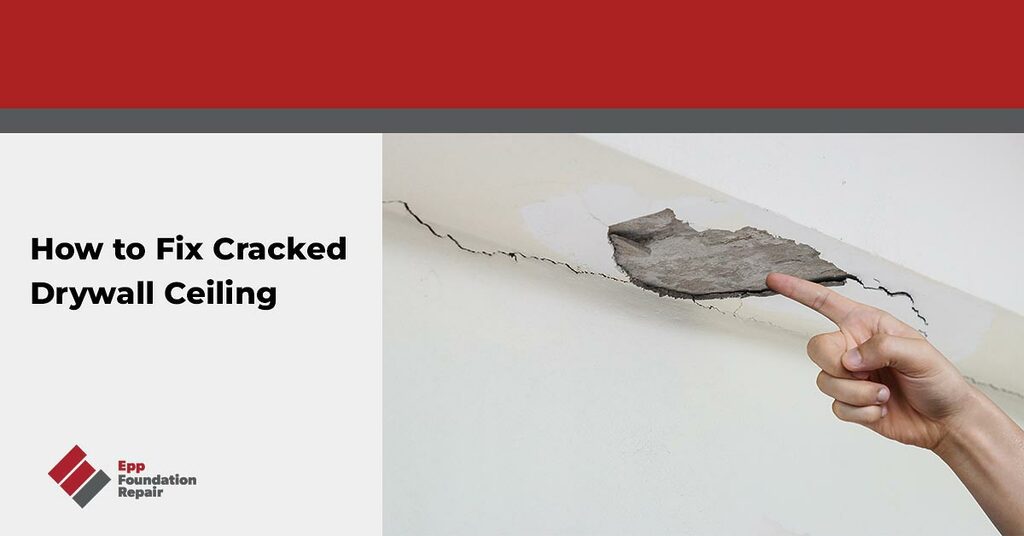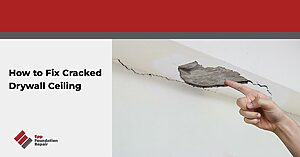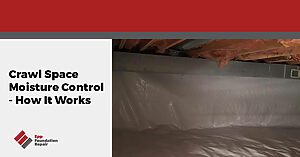Drywall is a very common building material but it is not the strongest material when compared to the foundation and frame of a home. It is used to cover the walls and when it is painted, it makes for a very nice wall finish.
The unfortunate reality is that, in many cases, drywall can crack. It can occur for a variety of reasons but when it happens, it is a real eyesore.
One way the drywall frequently cracks is on the ceiling. When this problem occurs, your eye is automatically pulled to that area. It doesn’t matter how good the rest of the home looks, all you will really notice is the crack in the ceiling.
In this article, we are going to discuss how to repair cracked drywall ceilings. This will include looking into the possible reasons why the crack may have occurred so it can be corrected permanently.
We all want our homes to look their best and first impressions really do matter in many cases. Don’t allow a cracked ceiling to distract people from the hard work you put into the rest of the home. Fix it now, and fix it permanently using the following methods described in this article.
What Causes Ceiling Cracks?
Not every ceiling crack is going to be the same as others. Being able to identify the different types of ceiling cracks can help you to identify the underlying problems.
Some of the different things you will look for with the ceiling cracks include the pattern and sizes. There may also be some discoloration that will point you in the right direction for a proper diagnosis.
Hairline Ceiling Cracks: These are very thin and they don’t tend to grow over time. Hairline cracks are not typically a problem to worry about, as they are often associated with poor workmanship or changes in the humidity.
In most cases, hairline ceiling cracks that have not expanded over time can simply be patched and they will not show up again.
Discolored Ceiling Cracks: Look carefully at the crack in the ceiling and see if there is any evidence of discoloration. If there is, it is likely due to water damage.
Some common colors for water-damaged drywall include brown and yellow. It may also be black, green, or other colors if mold is present.
These are serious issues because patching the crack is not going to fix the issue behind the damage. Allowing the water leak to continue will only cause the problem to expand and the crack will show up again, along with serious mold and mildew issues.
Spiderweb Cracks: If you see a spiderweb pattern of cracks extending across the ceiling, it is a sign of bigger issues. The cracks may not be large, but it usually indicates that there may be some settling happening with the foundation.
Uneven foundation settling, usually referred to as differential settlement puts pressure on the frame of the home. As it does so, it causes pressure on the rest of the home and the weakest material, the drywall, will eventually crack.
Cracks That Extend Down the Wall: If you have a ceiling crack that continues down the wall, this is also a sign of a more serious issue. In particular, it is a sign that there is movement in the foundation that needs to be addressed.
Foundation settlement can lead to these extensive cracks. The cracks may also show up near windows or doors, as that is an area of the home where the frame is under more significant pressure.
Straight-Line Cracks: Is the crack in the ceiling unusually straight? These cracks often look like they were created on purpose, but there is actually a reason why they are so straight.
Essentially, these types of cracks occur along the edge of the drywall, where two sheets of drywall meet together. If there is a problem with the drywall finish, such as the mud or the tape, then the crack will usually appear in a straight line.
Large Cracks with Other Ceiling Problems: Sometimes, the cracks are large and they continue to extend. You may also notice that the ceiling is bowing and damage is occurring to other areas of the drywall as well.
This is typically a serious problem that is associated with foundation shifting, water damage, or poor workmanship. If you notice these problems, it is important to contact EPP Foundation Repair for a free foundation inspection.
For more information, check our blog about – Gap between wall and floor.
Is the Foundation in Trouble?
As you may have noticed, some of the different types of ceiling cracks can indicate foundation problems. Should you panic when you see a crack forming?
Cracks in the ceiling can certainly be a sign of a bigger issue, but how do you know for sure? One thing you can do is look for other signs of foundation problems, including the following:
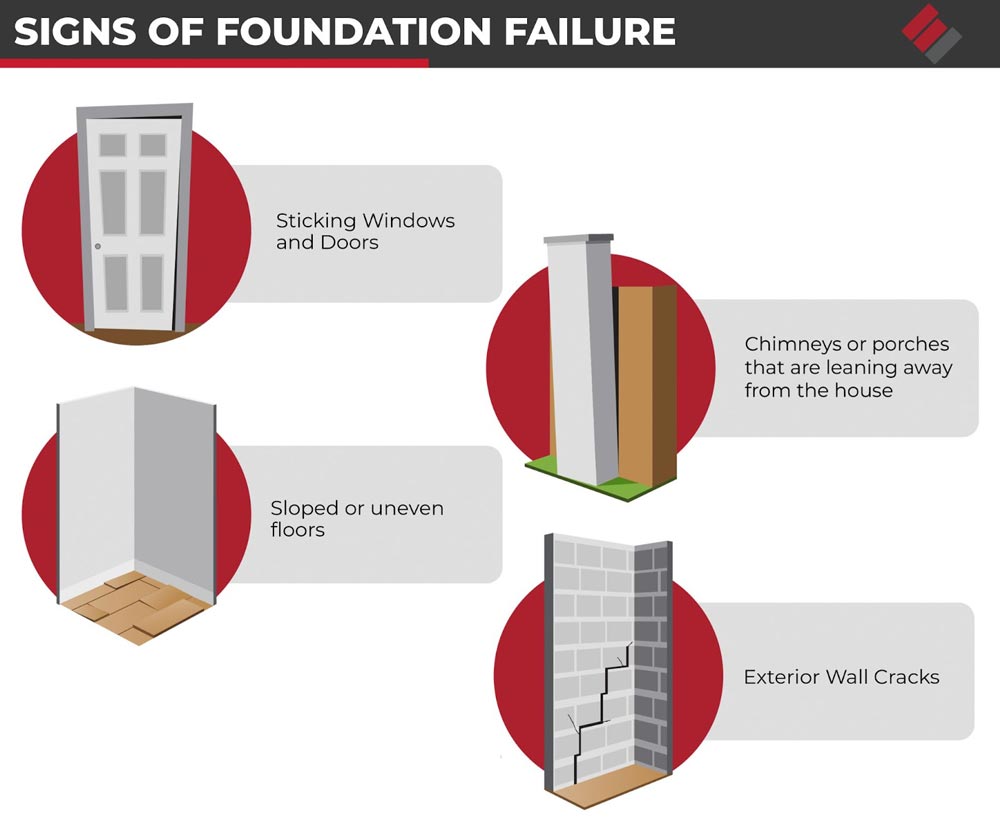
Sticking Windows and Doors: As the door and window frames get out of square due to pressure from the sinking foundation, it can cause the windows and doors to stick.
Sloped Floors: Most people can’t see the change in elevation as it changes. They can feel it though, as they often feel like they are falling or have vertigo.
Exterior Wall Cracks: When cracks begin appearing on the exterior walls, it is a sign that the foundation is shifting. Horizontal and stair step cracks are common with this issue.
Chimney Problems: The chimney is a heavy part of the home but it is often on a part of the foundation that is not strong. As a result, foundation problems often show up first in the chimney as it cracks, leans, and separates from the home.
If you suspect foundation problems, contact the pros at Epp Foundation Repair for a free foundation inspection and repair estimate.
How to Fix Small or Large Ceiling Cracks
Repairing a crack in the ceiling drywall is not difficult. The method is the same, for the most part, regardless of the size.
After you determine that there is not an underlying issue that needs repairing, such as a sinking foundation or water damage, you can move on to the repair process. Here are the basic steps necessary to get the job done:
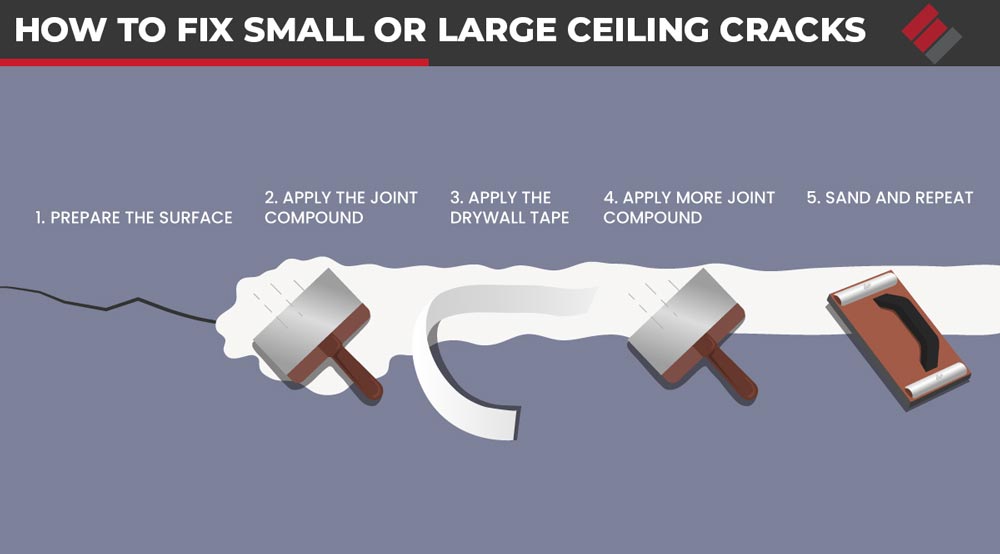
Prepare the Crack: This is a step that is all too often overlooked. It is important to use a five-in-one tool or utility knife to clean up the edges of the crack from loose drywall compound and paint. If there is any old drywall tape in the area, it should be removed.
Joint Compound: Use a suitably sized drywall knife to spread joint compound over the area of the crack. Don’t simply fill the crack with joint compound. You should be spreading it at least 3 inches wide with the crack in the center.
Drywall Tape: Applying drywall tape keeps the joint compound from shrinking into the crack and having it show through at the end. You can apply the tape, either mesh or paper so that it sticks in the wet joint compound.
Joint Compound: Continue to work the tape with joint compound but be careful not to apply too much to the area. You just want to cover it so that the mesh or tape edges disappear. The edges should be feathered out into the ceiling so they practically disappear.
This step may need to be repeated more than once. Just continue to work with it and be careful not to build up an edge. The smoother you have the joint compound, the less work you will have in the next step.
Sanding: Many people use sandpaper to remove any high points in the joint compound but it is better if you use a wet sponge. This is a method known as wet sanding, and it works very well.
A sponge that is soaked with water will act like a coarse-grit sandpaper. If you ring the sponge out, it will act like fine-grit sandpaper.
The benefit of wet sanding is that you don’t have any dust. It also does a good job, and you can always go back to add additional joint compound if you get too enthusiastic and remove too much material.
Paint: After allowing the joint compound to dry completely, you should paint the ceiling. It is best if you use a high-quality primer first and then paint second. You might also find that painting the entire ceiling helps to hide the crack completely.
What if Ceiling Cracks Keep Coming Back?
If the ceiling continues to crack in the same area after it has been repaired, it is a sign that there are still issues that need addressing. These could be problems with water leaks, foundation settling, and other issues.
Continuing to fix a crack that shows up time after time is like putting a Band-Aid on a bullet wound. You need to fix the underlying problem and, at that point, you can do any repairs that are necessary.
EPP Foundation Repair is your go-to resource for repairing any foundation problems. Large or small, we have the expertise, equipment, and manpower to get the job done. The top cities we serve are Lincoln, Omaha, Grand Island, Kearney, Norfolk, and many more; contact us today for a free estimate.

